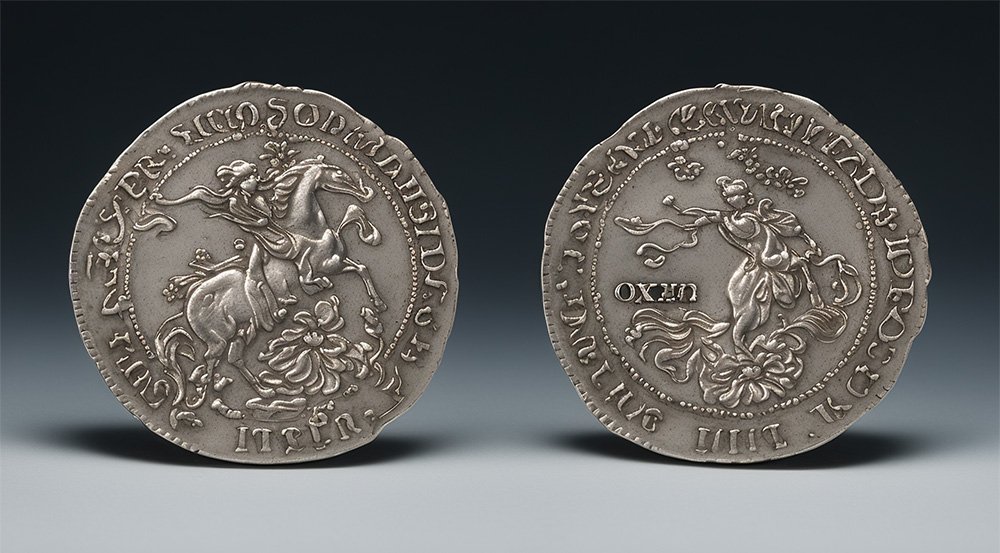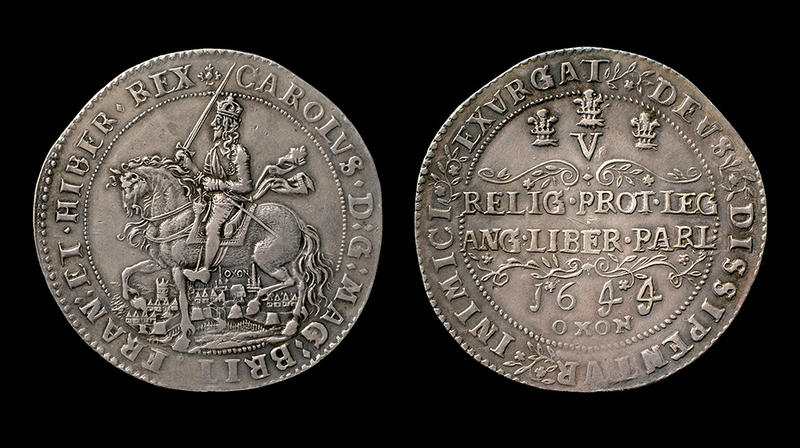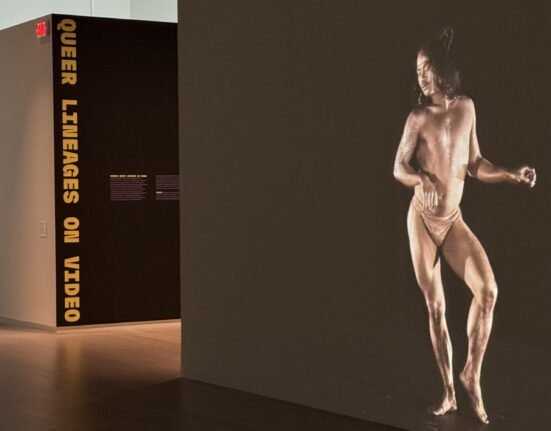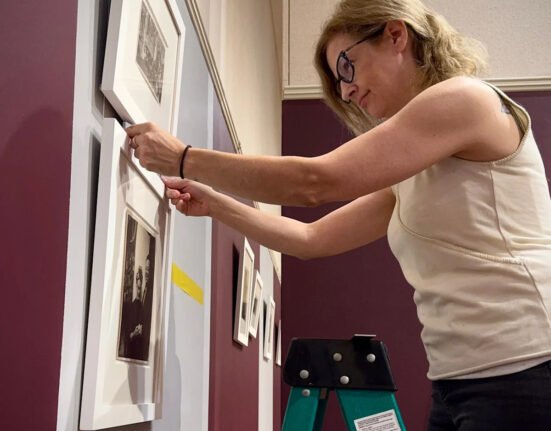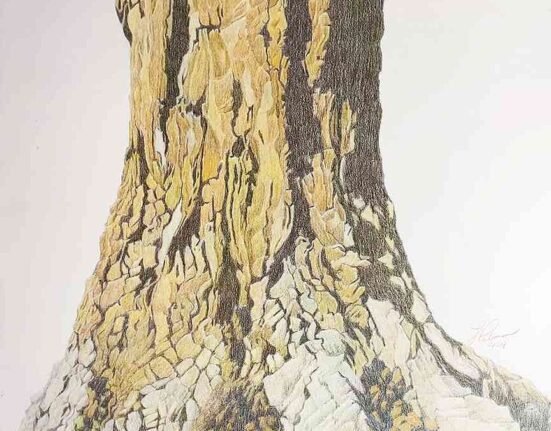Why the Oxford Crown coin as the Ashmolean Edition of artifacts?
Ana María Caballero: When we received confirmation that we would be contributing an edition of artifacts to the Money Talks Ashmolean exhibition, we began looking through the Museum’s coin collection in search of a good candidate to ‘rewrite’.
Our original artifacts project, released in 2023, used a diverse array of ancient coinage as its source material, replacing their narratives with new ones: inscribing tokens with scenes of domesticity, including pregnant women reading as well as public expressions of joy. Using generative AI, we insert unexpected stories onto digitally generated coins in order to question what and who is valued by society.
The Oxford Crown coin immediately stood out for several reasons. It is strongly rooted in Oxford, and we wanted our Ashmolean Edition to reference its place of origin specifically. It was minted in Oxford, when King Charles I moved his court to Oxford in 1642-46, during the English Civil War. The coin in the Museum’s collection is also well-preserved, which made it a good candidate for an AI source image. Finally, its iconography is ripe for subversion.
Dr Shailen Bhandare: Designed by Thomas Rawlins, the Oxford Crown bears Charles’s equestrian portrait. Below the horse, one can see the Oxford skyline, with several identifiable buildings. The reverse dates the coin to 1644 and advertises Charles’s aims in the Civil War – to uphold the Protestant religion, the laws of England and the freedom of Parliament. The writing around is from Psalm 68: ‘Let God arise, let his enemies be scattered’.
The Oxford Mint was set up at New Inn Hall, at the present site of St Peter’s College, in January 1642. Stocked with silver from Oxford and Cambridge colleges, the Oxford Mint managed to cover Charles’s needs for coinage in his war effort. Around 10 Oxford Crowns exist today – two are in the Ashmolean collection.

